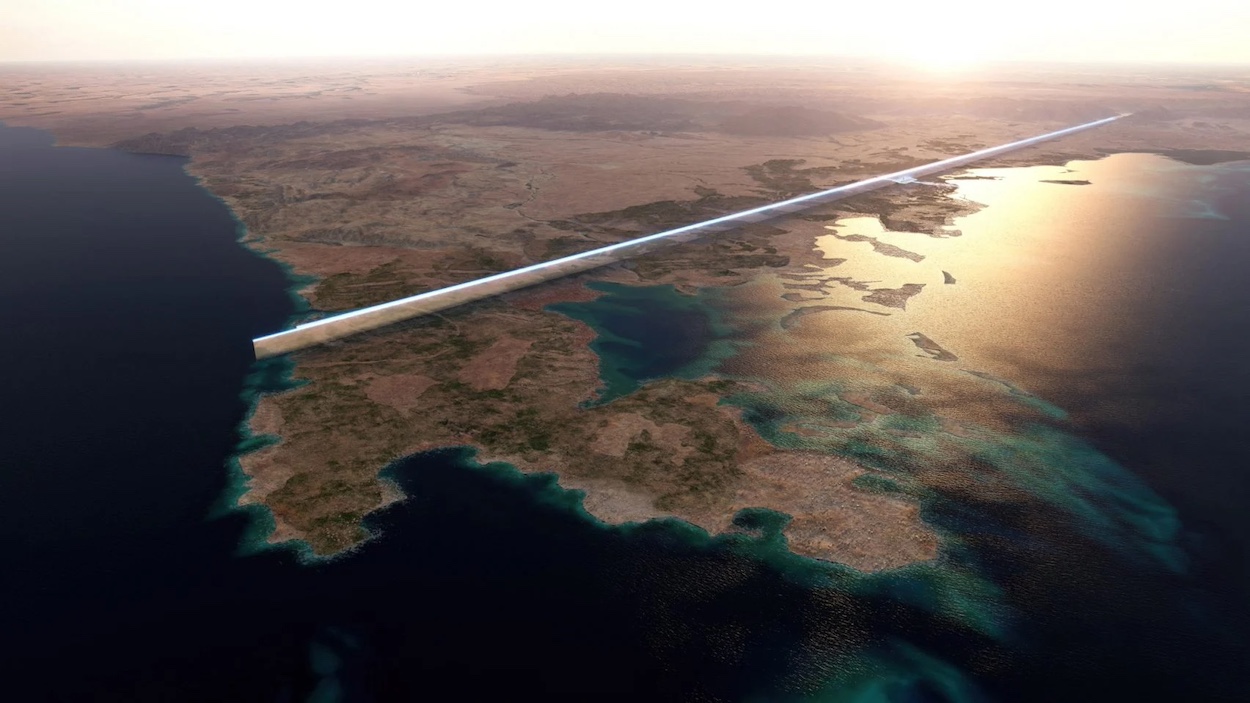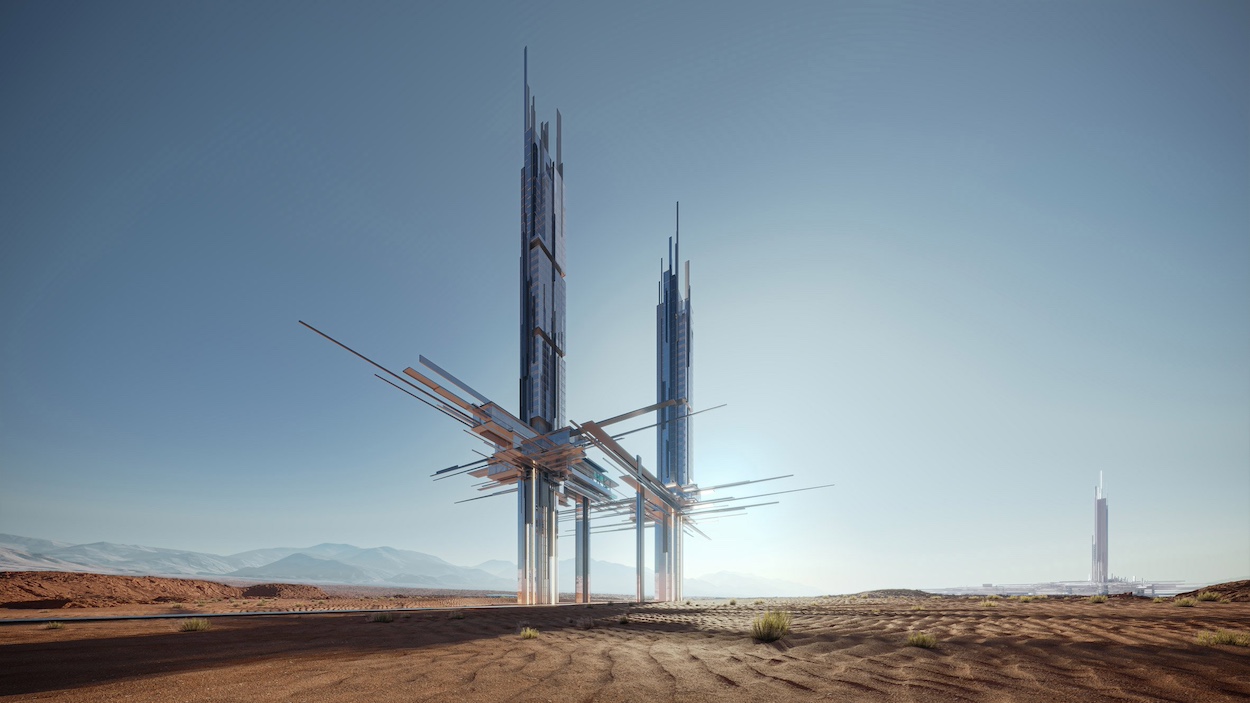It’s nearly impossible to consume architecture news without seeing updates—or lack thereof—about the outlandish giga-projects that Crown Prince Mohammed bin Salman is planning for the oil-rich Middle Eastern country’s ambitious Vision 2030 plan. All eyes are on Neom, the futuristic city-state roughly the size of Belgium that’s owned and supported by Saudi Arabia’s public investment fund. Anchored by The Line, a pair of mirrored skyscrapers taller than the Empire State Building stretching for an astonishing 110 miles and set to house nine million people, new regions of Neom are announced so frequently that it’s increasingly tough to wrap one’s mind around the size and scale, let alone the astronomical amount of labor and engineering heft to bring its increasingly audacious conceptual buildings to life.
Critics spurn Neom as a dystopian nightmare and over-the-top vanity project aimed at softening the country’s unsavory reputation as a regime that whacks journalists and displaces Indigenous people to make way for construction cranes. While satellite imagery shows that construction on The Line, billed as the “world’s biggest earthworks operation,” has kicked off, there are concerns that Saudi Arabia is pouring so much money into flashy spending that its cash reserves are drying up. Remember, developing Neom is only one part of Vision 2030: the country launched an airline that involved purchasing $35 billion worth of Boeing jets, plans to invest $40 billion into artificial intelligence, and launched a golf league that eked out a partnership with the PGA Tour. The country’s sovereign wealth fund has plummeted by three-quarters to $15 billion, the lowest since December 2020.
To keep spending, Saudi Arabia has turned to borrowing and planning a large sale of stock in the state-owned oil behemoth Saudi Aramco. That’s a cause for concern considering Vision 2030 spending has only started ramping up, including a plan to invest $38 billion into the video game sector. “It’s mind-boggling the amount of stuff that’s trying to be done here,” Tim Gallen, a visiting fellow at the Arab Gulf States Institute think tank, told the Wall Street Journal. Other experts anticipate projects will be scaled back, but there’s also the chance they can be pulled off. Qatar delivered on an overzealous $300 billion plan to build world-class museums, a sprawling public art program, starchitect-designed sports stadiums, and five-star hotels ahead of the 22nd FIFA World Cup in Doha. Though the construction boom was far from smooth, Qatar mostly realized those plans—proof that oil-driven wealth and an aspiration to flaunt cultural credentials can get things done, albeit at a smaller scale and an immense human cost.



